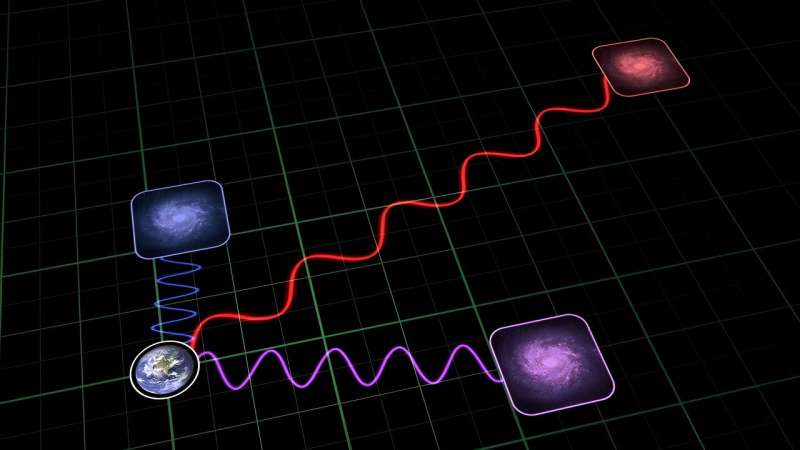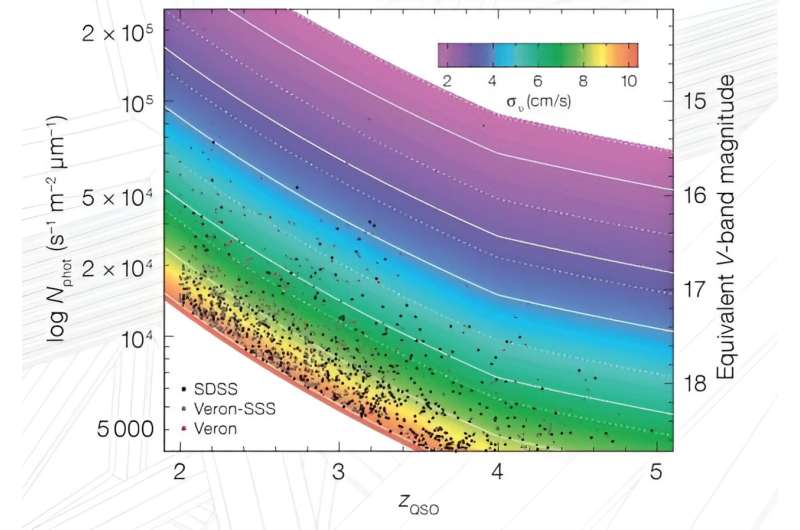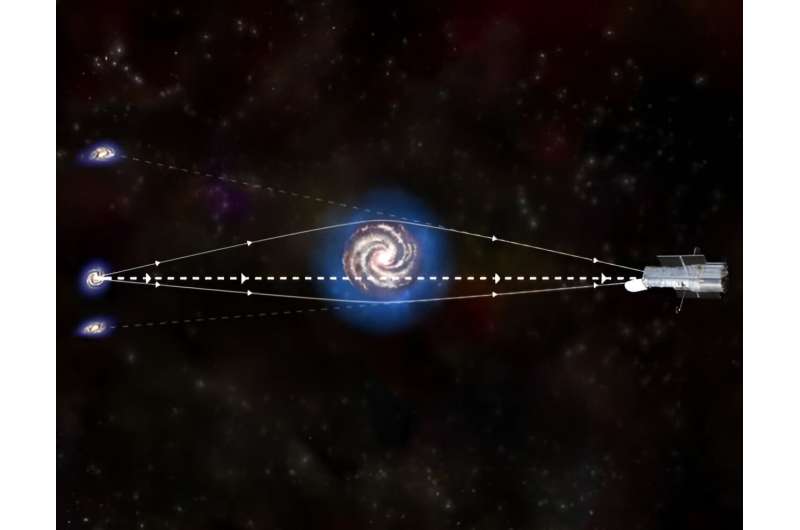This article has been reviewed according to Science X's editorial process and policies. Editors have highlighted the following attributes while ensuring the content's credibility:
fact-checked
peer-reviewed publication
trusted source
proofread
A new way to measure the expansion rate of the universe: Redshift drift

In 1929 Edwin Hubble published the first solid evidence that the universe is expanding. Drawing upon data from Vesto Slipher and Henrietta Leavitt, Hubble demonstrated a correlation between galactic distance and redshift. The more distant a galaxy was, the more its light appeared shifted to the red end of the spectrum.
We now know this is due to cosmic expansion. Space itself is expanding, which makes distant galaxies appear to recede away from us. The rate of this expansion is known as the Hubble parameter, and while we have a good idea of its value, there is still a bit of tension between different results.
One of the difficulties in resolving this tension is that thus far we can only measure cosmic expansion as it appears right now. This also means we can't determine whether cosmic expansion is due to general relativity or a more subtle extension of Einstein's model. But as powerful new telescopes are built, we might be able to observe the evolution of cosmic expansion thanks to what is known as the redshift drift effect.
The Hubble parameter has a value of about 70 km/s per megaparsec. This means if a galaxy is about 1 megaparsec away (about 3 million light-years), then the galaxy appears to be moving away from us at about 70 km/s. If a galaxy is 2 megaparsecs away, it will appear to recede at about 140 km/s. The greater a galaxy's distance, the greater its apparent speed.
Since the universe is still expanding, with each passing year a galaxy is a bit more distant, and that means its redshift should become slightly larger. In other words, cosmic expansion means that the redshifts of galaxies should drift more to the red over time.

This drift is extremely small. For a galaxy 12 billion light-years away, its apparent speed would be about 95% of the speed of light, while its drift would be just 15 cm/s each year. That's much too small for current telescopes to observe. But when the Extremely Large Telescope (ELT) starts gathering data in 2027, it should be able to observe this drift in time. Estimates are that after 5–10 years of precise observations, ELT should be able to see redshift drifts on the order of 5 cm/s.
While this will become a powerful tool in our understanding of the universe, it will take a lot of data and a lot of time. So a new paper, published on the preprint server arXiv, proposes a different method using gravitational lensing.
The authors call this effect redshift difference. Rather than observing the redshift of a galaxy over decades, the team proposes looking for distant galaxies that are gravitationally lensed by a closer galaxy. Lots of distant galaxies are lensed by a closer galaxy between us and the distant one, but most lensed galaxies appear as a single distorted arc to the side of the foreground galaxy.

But sometimes gravitational lensing can create multiple images of a distant galaxy. Since each image of the distant galaxy takes a slightly different path to reach us, the distance of each path is also slightly different. So instead of waiting decades for a galaxy to move farther away from us, we can get snapshots of the galaxy separated by years or decades. Each image would have a slightly different redshift, and by comparing these we could measure the redshift drift.
This is still beyond our current ability to detect. But while we are waiting for telescopes such as the ELT to come online, we can search for distant lensed galaxies with multiple images. That way when we do have the ability to detect redshift drift, we won't have to wait decades for the result.
More information: Chengyi Wang et al, The Redshift Difference in Gravitational Lensed Systems: A Novel Probe of Cosmology, arXiv (2023). DOI: 10.48550/arxiv.2308.07529
Fulvio Melia, Definitive test of theRh = ctuniverse using redshift drift, Monthly Notices of the Royal Astronomical Society: Letters (2016). DOI: 10.1093/mnrasl/slw157
Journal information: Monthly Notices of the Royal Astronomical Society Letters , arXiv
Provided by Universe Today




















